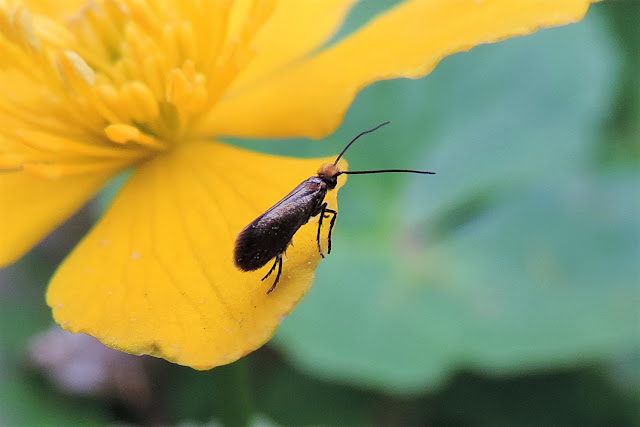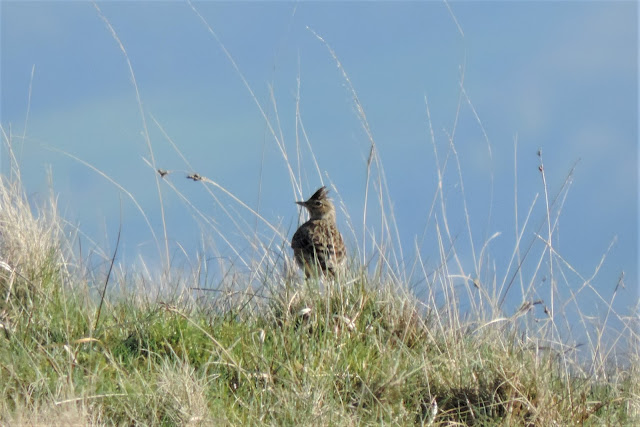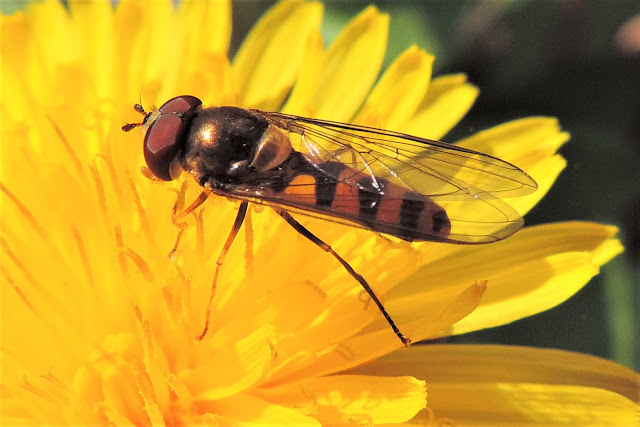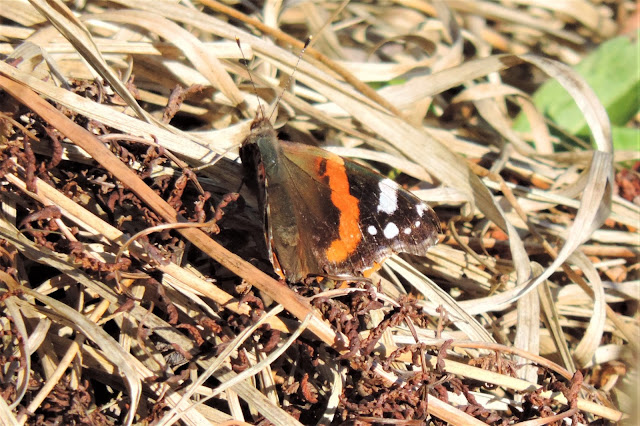An afternoon down Parc Slip NR was on the cards when the news came through of a
Pink-footed Goose present at mid-day. The weather was cloudy to start but then the sun came out and a few insects started to show.
Duly saw the Pink-footed Goose on the main lagoon island, other highlights included 2 Barn Swallow, 2 Willow Warbler, 8 Chiffchaff, 1 Blackcap, 8 Lapwing, 22 Canada Goose, 9 Teal, 1 male Pochard and 4 [1 male] Tufted Duck. Undoubtedly the best sighting besides the goose was a fly over
Curlew which was attacked by the Lapwing so it continued on it's way up and over Mynydd Ty Talwyn.
Insects included Tree and Buff-tailed Bumblebee, Honey Bee, Comma butterfly and Gorse Shieldbug. 6 species of hoverfly were present all common.
Stopped at My. Ty Talwyn on the way back hoping to see the Curlew again but no luck there. But did see female Sparrowhawk, 2 pairs of Linnet, female Wheatear [1st of year] and 2 pairs of Raven displaying of note.
Pink-footed Goose
Goldfinch @ the Llangynwyd massif
Comma
Gorse Shieldbug
Eristalis pertinax
Melanostoma scalare
Syrphus species - didn't catch this one so will have to go down as Syrphus sp. as I can't see any eye-hair in the photo












































